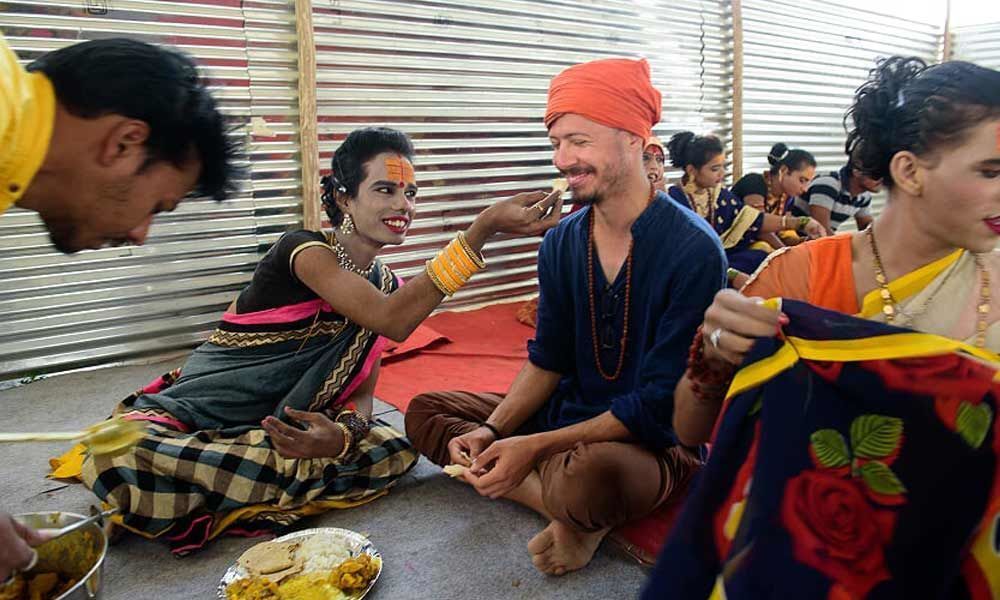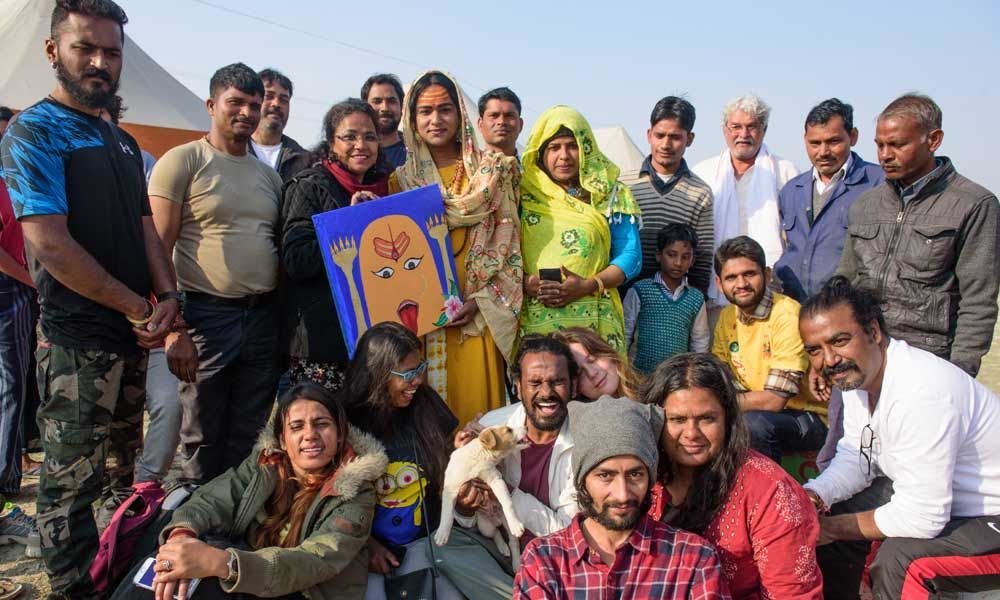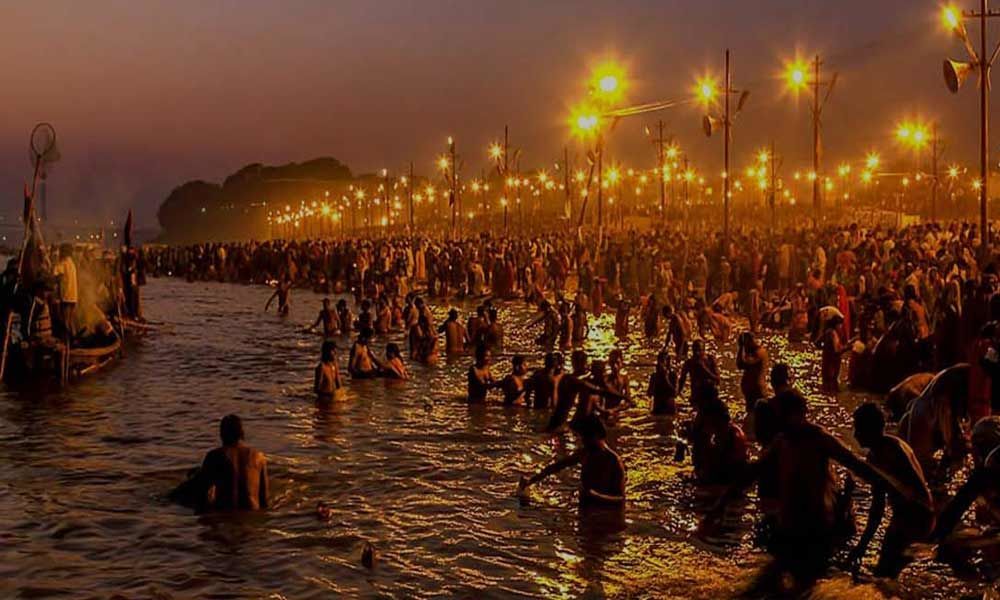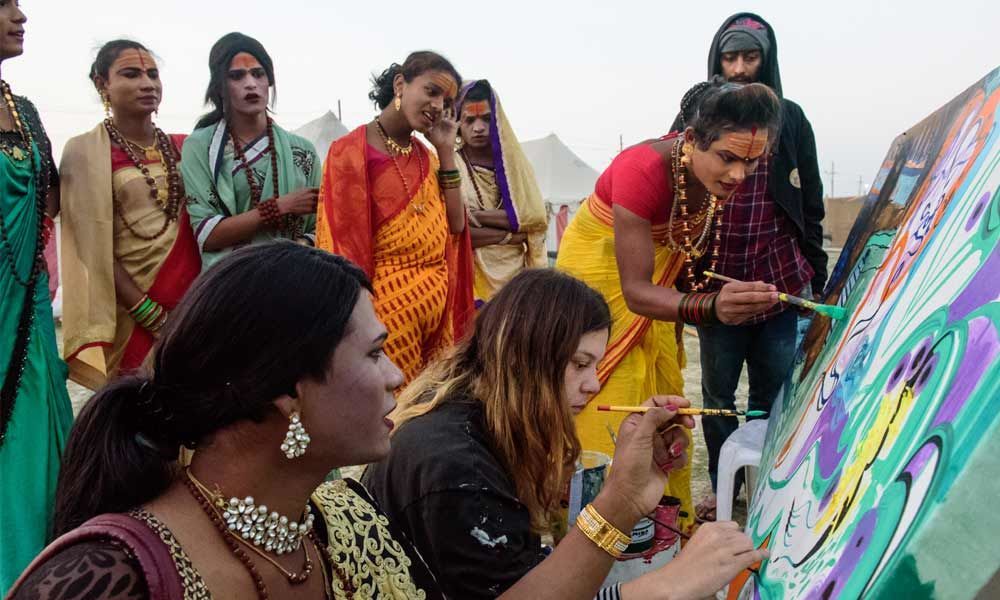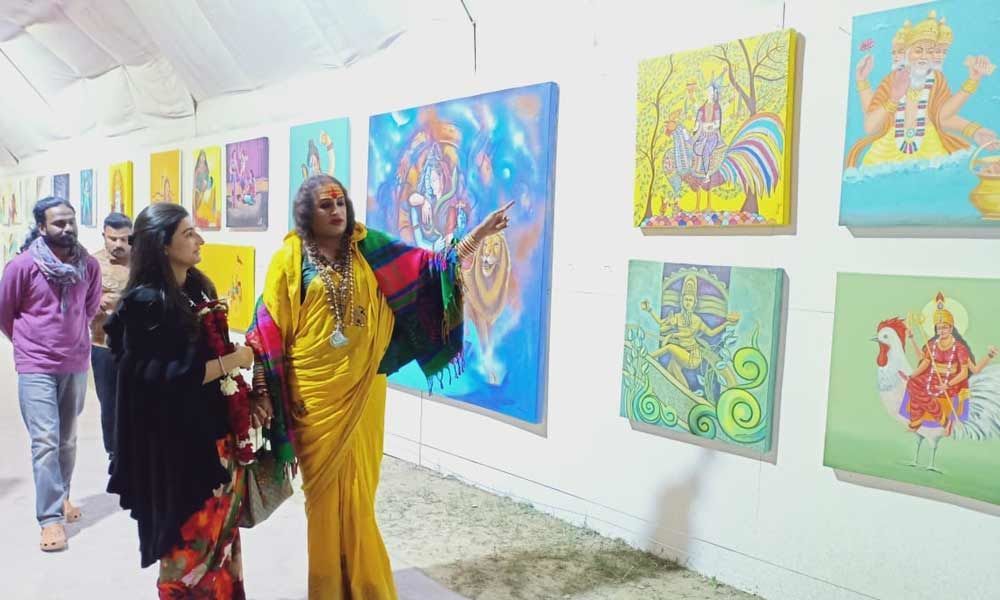Live
- Governor Jishnu Dev Varma to Attend ABVP 43rd State Conference in Siddipet Today
- Transgenders to Begin Traffic Assistant Duties in Hyderabad from Tomorrow
- Police Security Tightened at Allu Arjun’s Residence After OU JAC Vandalism
- ED Likely to Issue Notices to BRS Working President KTR Today
- CM Chandrababu Naidu to Attend Christmas Celebrations in Amaravati Today
- CM Revanth to Review Projects with Senior Officials Today
- Fix Ozone Layer Depletion
- Harish Rao to Visit Medak Today for Centenary Celebrations
- Irregularities in TUDA under vigilance scanner
- ‘Pushpa-2’ row: Celebs & politicos fail to act fairly
Just In
Every piece of art is an experience in itself.
Every piece of art is a journey.
And on my journey of Kinnar Art Village, I saw prejudices breaking, ideas changing and love prevailing.
In the city of Prayagraj, historically known as Allahabad, the festival of Kumbh Mela, drew millions of devotes and travellers who came to take a dip at the confluence of the three holy rivers — Ganges, Yamuna and the Saraswati, the latter long dried up and known only in myth — and to catch a glimpse of the holy men and women who camped at the month-long festival.
At this recently concluded Kumbh Mela, the first-ever transgender akhara, the 'Kinnar Akhara' used art to break down social barriers at its Kinnar Art Village.
Giving artists from the LGBTQI+ community a platform where conditions of gender identity or mainstream culture do not apply, the Kinnar Art Village educated and sensitised people about the community's rich history and contemporary significance.
As the curious and the devout along with the lensmen, writers, folk artists, painters, documentary filmmakers, etc, from India and abroad flocked the Art Village, this akhara became a 'paradise' to peep into the inside world of this community.
While I walk around the village, I am greeted by an acrylic-sprayed canvas of Bahuchara Mata, the ancient Hindu goddess of fertility.
She is perched on a rooster after shedding her femininity.
Her marauder is cursed to a life of impotence unless he acts and dresses like a woman for a year.
I encounter artists debating queer issues while dabbling with installations, photographs, paintings, and sculpture echoing themes from mythology to contemporary trans activism.
The other art pieces portray eunuchs in royal palaces during the Mughal era, and contemporary trans activists liberating the queer community.
The focus here is on evocative storytelling as the artists drew out themes from regional folklore and Hindu literary texts rife with stories of gender transformation.
While the colonial legacy reduced India's trans people to lives of misery and estrangement from the mainstream, transgender activist and founder of this first monastic order of transgender people, the ever-radiant Laxmi Narayan Tripathi is encouraging artists to shed their trappings of heteronormativity through this lively art village.
The idea for this art spectacle originated as early as in 2016 when Mumbai-based photographer Punit Reddy was in Ujjain to understand the trans community's exclusion from the religious mainstream.
Reddy thought it was important to break stereotypes that have relegated trans people to the margins of society.
"The lack of employment opportunities has forced them into sex work, extortion and begging," Reddy says.
He initially planned to have artworks with only religious connotations, but later decided to include secular and contemporary works.
"In an artists' residency, there's bound to be an exchange of ideas and aesthetics. Art isn't one-dimensional," he adds.
One of the artists at the Art Village, Christopher Singh is a practising artist born and based in New Zealand with residencies in China.
At his stay at the Kinnar Art Village, he merged his practice with recyclable materials to create and reuse many of the discarded artefacts and waste distributed at Kumbh Mela.
Nadia Zoubenko, a multimedia artist based in Israel captured scenes from the Mughal era, the life of ancient kinnars, existing within the space of kings and harems, playful as entertainers, artists and sex workers with soil, acrylic, natural fibres, plaster and many more tools to craft her vision.
As transgender artists come out to work, they realise they do not need to hide any more.
They do not need to paint only at night, far from the prying eyes of the world. "Here, we paint without inhibition.
Here, we do not hide," says Sanjana Patil, a 40-year-old transgender artist from Nashik.
I don't know how to pray but I know how to keep the faith and I will thus, just have faith on us, on our society and our time; hoping that all of us are ready for this piece of art.

© 2024 Hyderabad Media House Limited/The Hans India. All rights reserved. Powered by hocalwire.com





